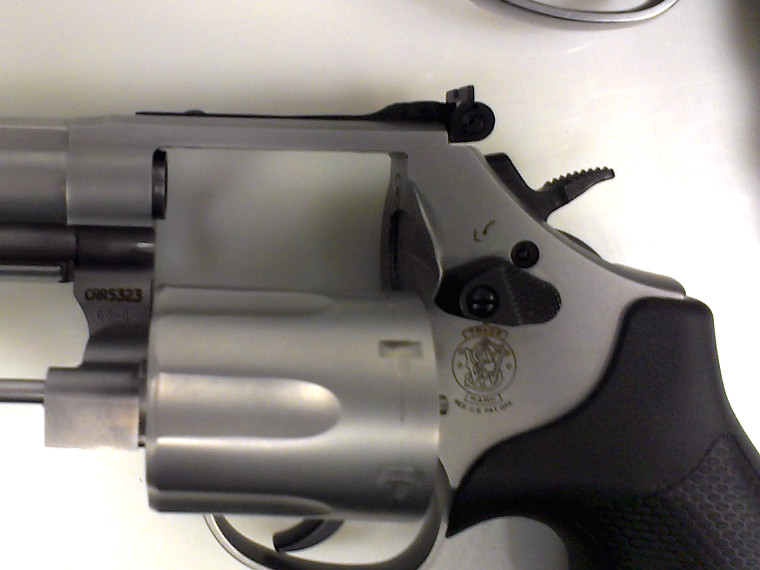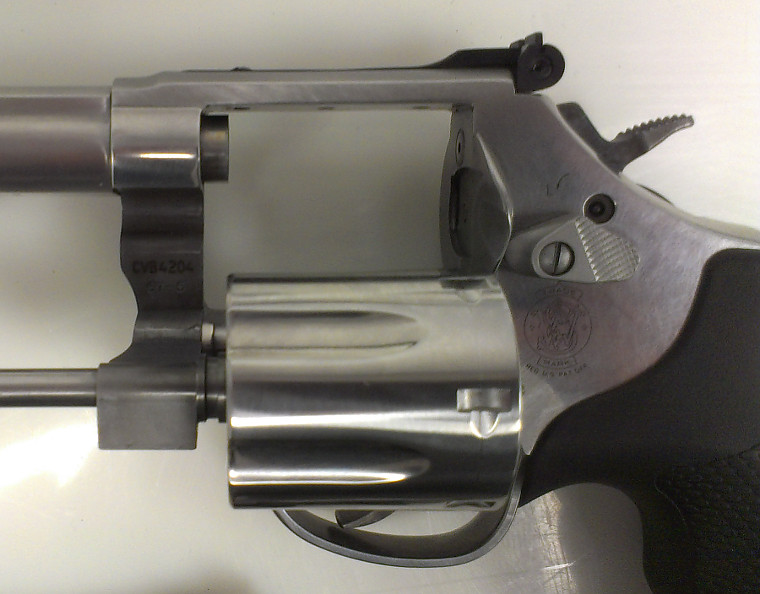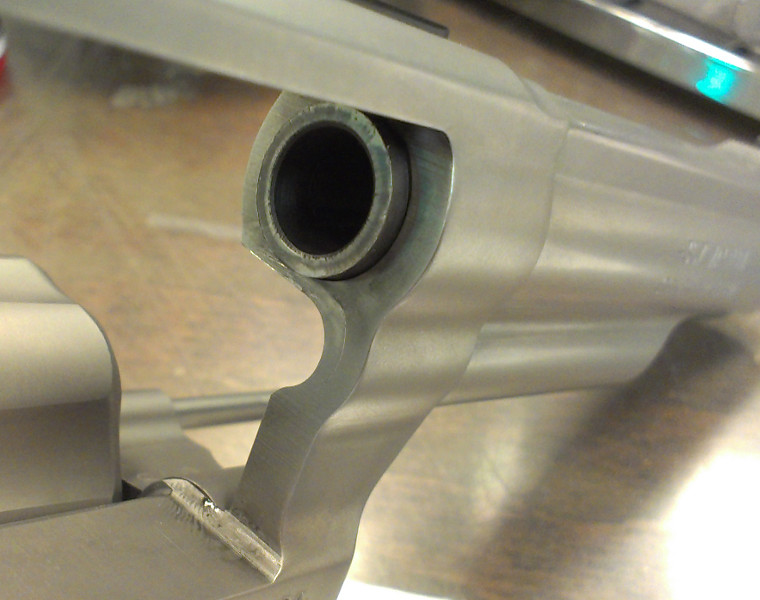The issue with K-Frame Magnums was never really full-power Magnum ammo in and of itself, but rather full-power Magnum ammo with light bullets. You see, the older K-Frames with one-piece barrels had a flat spot ground on the outside of the forcing cone at the six o'clock position. This had to be done in order to make enough clearance for the yoke when the cylinder was closed. Unfortunately, this design produces a thin spot in the forcing cone at the six o'clock position and that is where the issues for K-Frame Magnums arose.
You see, even with the thin spot, the forcing cones were still plenty stout enough for .38 Special ammo and the 158gr .357 Magnum loads available when the original K-Frame Combat Magnum was introduced in the 1950's. In the 70's and 80's, however, .357 Magnum ammo with lighter 110-125gr bullet came into vogue and then the problems began. The lighter bullets are also shorter and thus have not completely sealed the chamber throat by the time the base of the bullet has left the case. This, in turn, allows hot gas and burning powder to flow around the bullet and into the forcing cone thus accelerating wear in that area. If the forcing cone is subjected to enough of this erosion, it can eventually crack and if it does, it invariably does so at the six o'clock position where it is weakest. Because of this, the standard advice with older K-Frame Magnums is to restrict their shooting to .38 Special ammo or .357 Magnum ammo with bullets no lighter than 140gr.
Now, I have heard and read that there are other factors that contribute to the longevity of K-Frame forcing cones as well. I've read that many of the revolvers which turn up with cracked forcing cones also have significant lead deposits from less-than-optimum cleaning in their forcing cones. I've seen it claimed that stainless steel models (M65 and 66) are less likely to crack forcing cones than carbon steel models (M13 and 19). I've also seen it claimed that the problem became more prominent after S&W switched from pinned barrels to crush-fit barrels in the early 80's. I cannot verify any of this so my personal policy is to follow the .38 Spl/140+gr .357 Mag ammo recommendation for any older K-Frame magnum regardless of the steel it's made of or the manner in which its barrel is secured.
Now, some have said that the two-piece barrel of the new M66 has eliminated the flat ground spot. I cannot confirm or deny this as I haven't had the opportunity to handle and examine one of the new specimens. The only two-piece barrel K-Frame I've handled is my younger sisters M64 which is chambered for .38 Special only. On that gun, while it is less apparent, there does still seem to be a slight flat spot on the outside of the forcing cone at the six o'clock position. However, S&W may have made slight dimensional modifications to the M66 so that it wouldn't share this design feature with the M64.
I guess the best advice I can give you is to contact S&W directly and ask them about ammo recommendations for the M66-8. If they say that lightweight Magnums are OK, then I'd fire them without hesitation. Newly manufactured S&W handguns have a lifetime warranty to the original purchaser so any issues you might have should be covered unless you are firing ammo that they specifically warn against. Of course, I don't see how simply sticking to the ammo recommendation for older K-Frames would hurt the longevity of your gun either so you could always simply avoid lightweight Magnums all together (there are plenty of good .357 Magnum loadings with 140gr or heavier bullets available).



